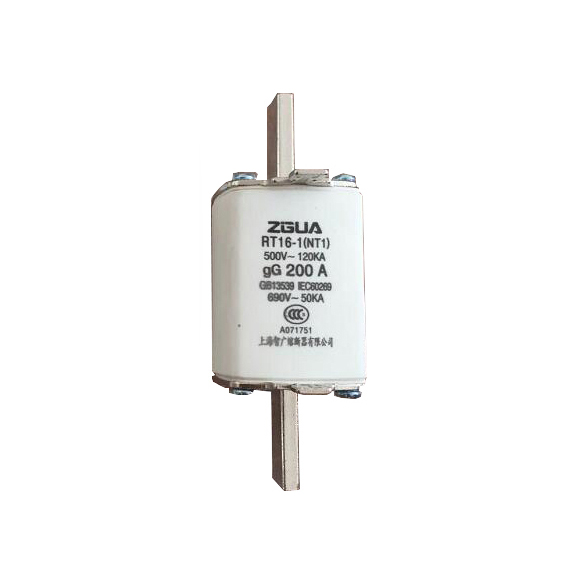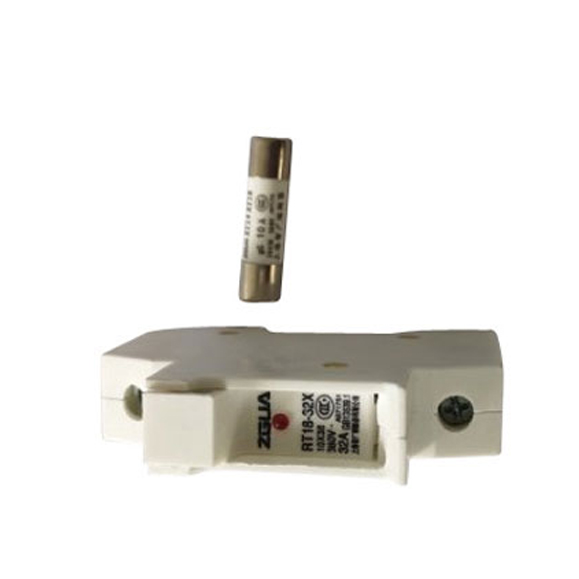Low-voltage fuse manufacturer knowledge answer: how to measure fuse blowing?
Welcome to Shanghai Zhiguang Fuse Co., Ltd. We are a low-voltage fuse manufacturer in China. Many people are not very clear about "how to measure fuse blown", "fuse detection methods and detection steps", etc., as follows It is the editor who knows how to judge that the fuse is broken, and how to check and maintain the fuse. Carefully organized, estimated to read 1 minute.
Low-Voltage Fuses Of NT(NH)RT16 Serises
How to tell if the fuse is broken?
1. Whether it is AC or DC, switch the multimeter to the corresponding voltage position, first detect the voltage of the pile head on the two fuses, if it is normal, it means that there is no problem with the power supply, and then check the voltage of the pile head under the two fuses, the voltage Like the upper pile head, there is no problem with any fuse. If there is no voltage detected by the lower pile head, it can be concluded that one fuse has burned or both fuses have burned.
2. Check that there is no voltage at the lower pile head. Put one multimeter pen on the lower pile head of the fuse, and one on the upper pile head of the fuse. If there is voltage, it indicates which fuse is good for the test pen to put down the pile head. which fuse is bad. Change the test leads, and in the same way, you can check whether another fuse or other fuses are good or bad.
3. The method of measuring resistance cannot be checked with electricity. Pull down the fuse, use the ohm crotch of the multimeter or the buzzer gear, and the test leads touch the two ends of the fuse. If the resistance is zero or the buzzer will sound, it means it is good. Otherwise, it is bad.
Use the resistance of the multimeter to connect the two ends of the fuse. The low-voltage fuse manufacturer warmly reminds us that if the resistance is large, it means it is broken; if the resistance is zero or small, it means it is good. After the current in the fuse exceeds the specified value for a period of time, the heat generated by itself melts the melt, thereby disconnecting the circuit.
Do low-voltage fuse manufacturers answer how to check the fuse?
① Check that the ratings of fuses and fuses are compatible with the equipment being protected;
② Check whether the appearance of the fuse is damaged or deformed and whether there are flashing discharge traces on the porcelain insulating part;
③ Check whether the contact point of the fuse is good, whether the contact is tight, and whether it is overheated.
④Whether the fuse signal indicator of the fuse is normal.
How are fuses maintained?
Fuses should be repaired at the same time as the distribution unit:
①Clean the dust and check the contact condition of the contacts;
② Check whether the appearance of the fuse (remove the fuse tube) is damaged and deformed and whether there are discharge flash marks on the porcelain bottle;
③ Check whether the fuse and melt are consistent with the protection circuit or equipment, and check in time if there is any problem;
④ Pay attention to checking the N wire in the TN grounding system, and the grounding protection line of the equipment, and prohibit the use of fuses;
⑤When maintaining and inspecting the fuse, please cut off the power supply according to the requirements of the safety regulations, and it is strictly forbidden to disassemble the fuse tube with power on.
Regarding the inspection and maintenance of fuses and fuses, low-voltage fuse manufacturers have collected and sorted out so much content for you today. I hope you can have a clear understanding of fuses after reading it. In fact, the role of the fuse is very important, it can protect the safety of the circuit we use, so as to ensure the safety of our lives and property. But you must pay attention to some problems when using it to prevent safety accidents. If you still don't understand the function of the fuse, you can consult with professionals.

 English
English 中文
中文 Pусский
Pусский Français
Français Español
Español





